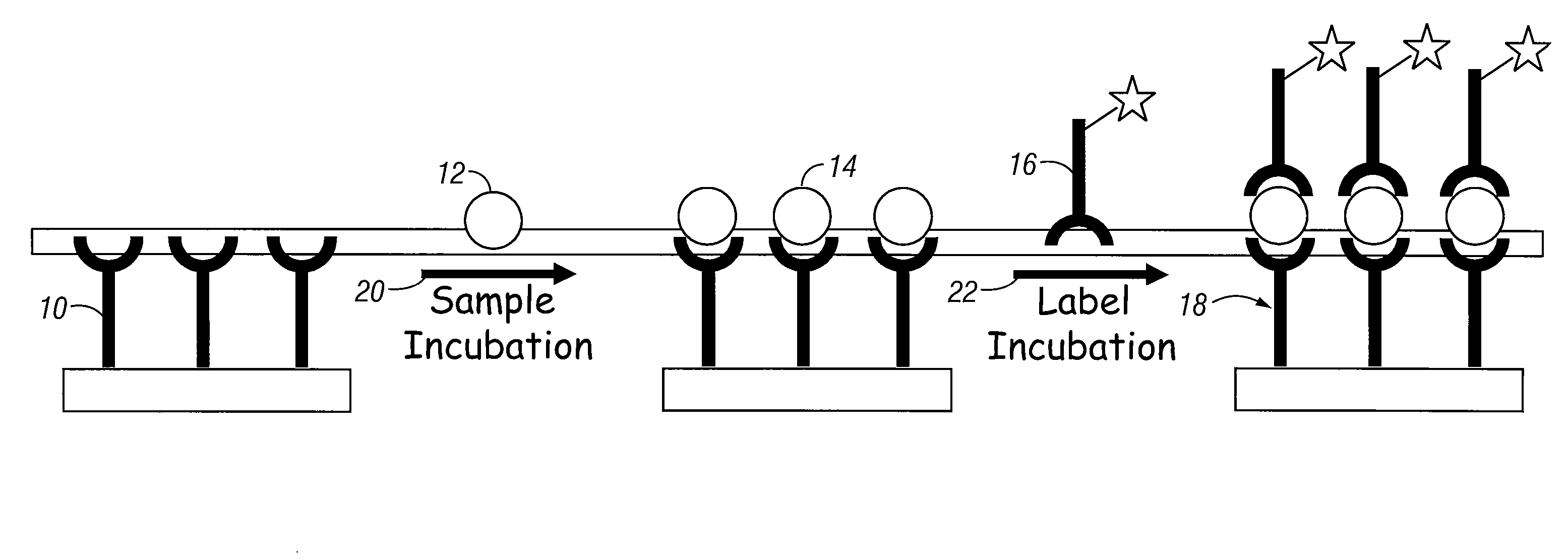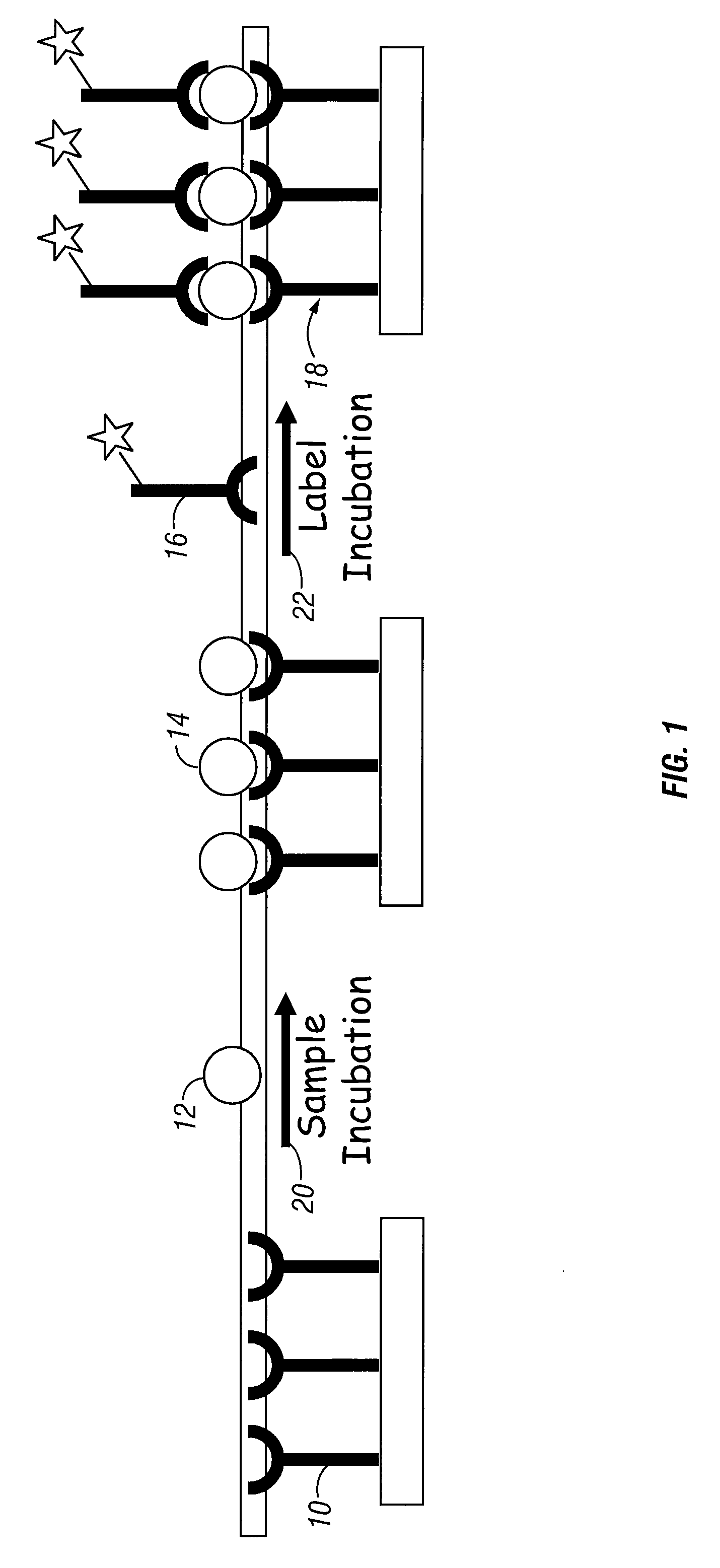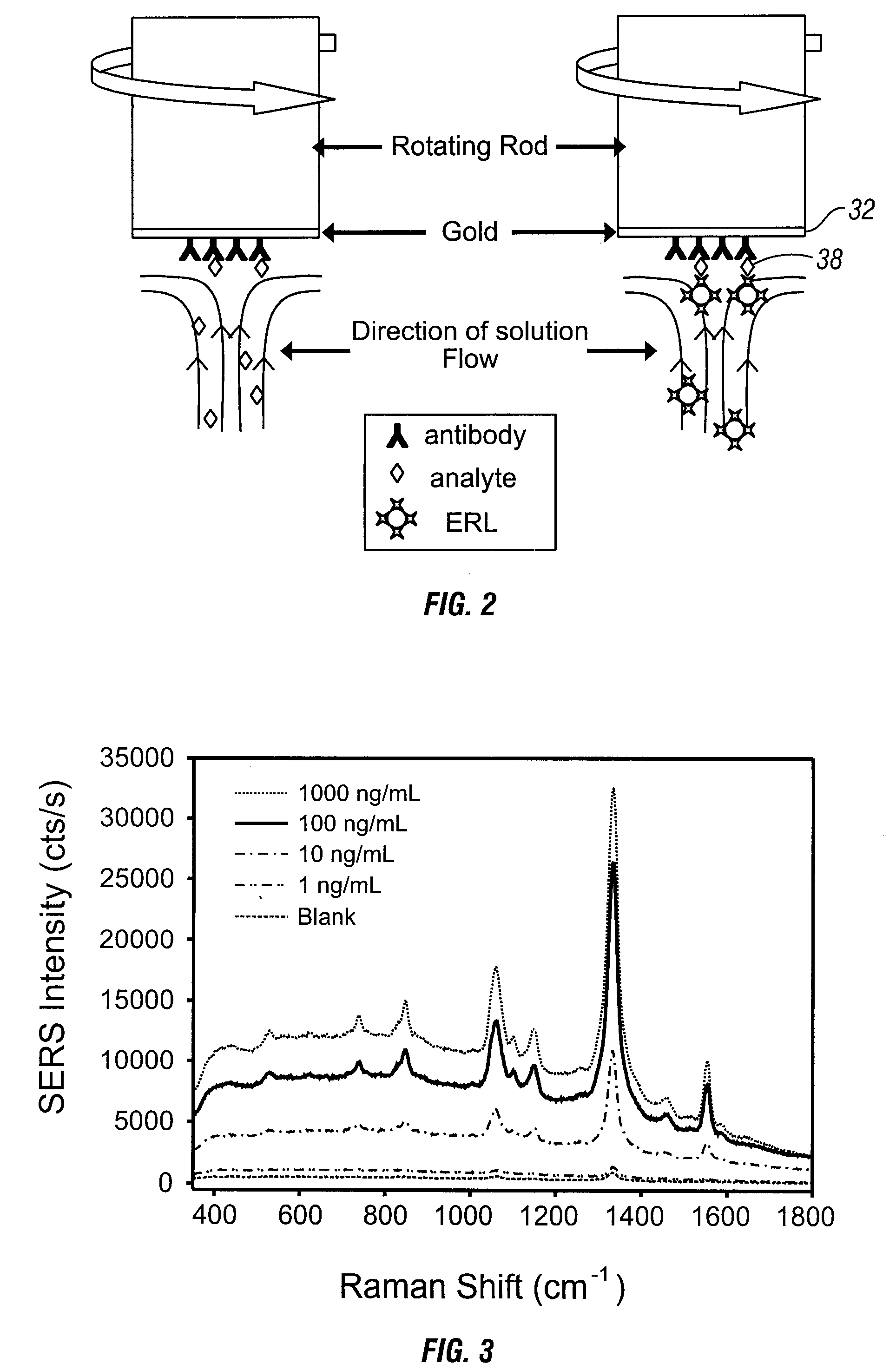Spin array method
a technology of arrays and spin arrays, applied in the field of spin arrays, can solve the problems of long incubation time, significant decrease in economics of running these assays, and increase limitations, and achieve the effect of reducing the assay tim
- Summary
- Abstract
- Description
- Claims
- Application Information
AI Technical Summary
Benefits of technology
Problems solved by technology
Method used
Image
Examples
example
[0023]Gold nanoparticles [60-nm diameter (10 particles / mL] were purchased. Octadecanethiol (ODT), DSP, and phosphate buffered saline (PBS) packs (10 mM, pH 7.2) were obtained from Sigma. SuperBlock and BupH Borate Buffer Packs (50 mM, pH 8.5) were acquired from Pierce. DSNB [5,5′-dithiobis(succinimidyl-2-nitrobenzoate)] was synthesized. All buffers were passed through a 0.22-μm syringe filter (Costar). Contrad 70 (Decon Labs), a mild detergent, was used to clean the glass substrates. Poly(dimethyl siloxane) (PDMS, Dow Corning) was used to prepare microcontact printing stamps.
[0024]Goat anti-rabbit IgG polyclonal antibody was purchased from US Biological. The antibody was purified by immunoaffinity chromatography, and supplied as 0.5 mg / mL in PBS (pH 7.2) containing 0.01% sodium azide and 40% glycerol. Experiments show that the performance of the assay varied slightly with each batch of the antibody, and an approach to account for this variation is detailed later. Whole molecule rabb...
PUM
 Login to View More
Login to View More Abstract
Description
Claims
Application Information
 Login to View More
Login to View More - R&D
- Intellectual Property
- Life Sciences
- Materials
- Tech Scout
- Unparalleled Data Quality
- Higher Quality Content
- 60% Fewer Hallucinations
Browse by: Latest US Patents, China's latest patents, Technical Efficacy Thesaurus, Application Domain, Technology Topic, Popular Technical Reports.
© 2025 PatSnap. All rights reserved.Legal|Privacy policy|Modern Slavery Act Transparency Statement|Sitemap|About US| Contact US: help@patsnap.com



